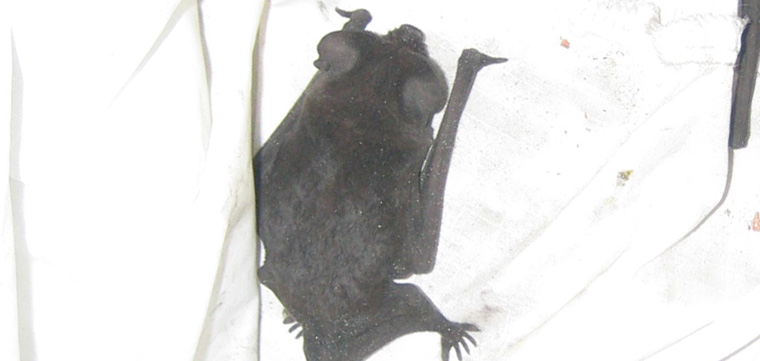-
info@aaanimalcontrol.com
Call us for help in your town
Humane Wildlife Education
Some Things to Know About Histoplasmosis
Need bat removal in your hometown? We service over 500 USA locations! Click here to hire us in your town and check prices - updated for year 2020.
Histoplasmosis is a fungal disease that is caused by the Histoplasma capsulatum fungus. This fungus is found worldwide in temperate climates. In the US, the fungus is especially endemic to the Ohio and Mississippi River valleys, as well as in the other eastern and central states.

Humans can be infected by this fungus and develop histoplasmosis through spore inhalation. The fungus that causes histoplasmosis lives damp environments where there are chicken coops or bat caves, in soil that is contaminated by large amounts of bird or bat feces. While bats can catch, carry, and transmit histoplasmosis through their guano, birds don't get infected, nor can they infect us, but their droppings favor the development of the fungus through soil contamination. The fungus is resilient, contaminated soil remaining infectious for several years. The airborne disease is highly contractible as fungal spores raised from disrupted contaminated soil can easily travel for hundreds of feet.
There are approximately 250,000 cases of histoplasmosis reported in the US each year, but the disease is mostly asymptomatic. People who do present symptoms without being immunocompromised may experience fatigue, fever, and coughing. A compromised immune system, however, can lead to clinical manifestations such as pulmonary histoplasmosis or disseminated histoplasmosis.
Learn about Bat bug infestation.
While it is not uncommon for the symptoms of histoplasmosis to go away without any type of medication or alternative treatment, chronic histoplasmosis, disseminated histoplasmosis, or pulmonary histoplasmosis requires treatment with prescription antifungal medication.
If you're living in an area endemic to histoplasmosis, it is recommended that you wear a facemask when working or when in contact with possibly contaminated soil. Contamination prevention can also be accomplished by abundantly spraying water on soil that's likely to be contaminated by the fungus. If you're cleaning a chicken coop, for example, spraying water on the ground before you start cleaning will prevent fungal spores from becoming airborne. Same if you're digging or working in possibly contaminated soil that's near or in bat caves – heavily water spray the ground area before beginning your activity.
If you're dealing with a few bats that have invaded your property, there's no need to start panicking about histoplasmosis. However, if your bat issue falls in line with the more common issue of a bat maternity colony, the large amount of excrements the bats will produce can create
an environment that enables fungal growth, not to mention the incredibly nasty smell produced by this waste.
For more information, you may want to click on one of these guides that I wrote:
How much does bat removal cost? - get the lowdown on prices.
How to get rid of bats - my main bat removal info guide.
Example bat removal photographs - get do-it-yourself ideas.
Bat job blog - learn from great examples of bat jobs I've done.


















